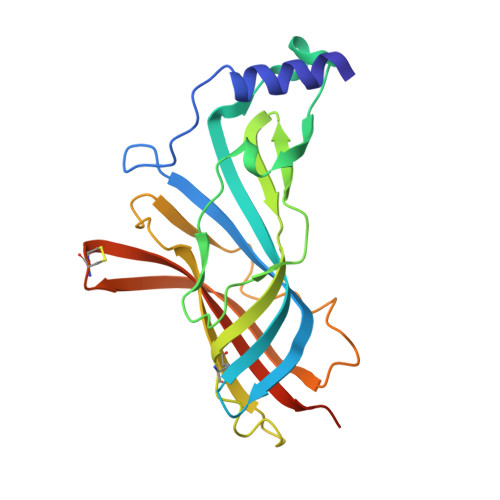Structural Characterization of Binding Mode of Smoking Cessation Drugs to Nicotinic Acetylcholine Receptors Through Study of Ligand Complexes with Acetylcholine-Binding Protein.
Rucktooa, P., Haseler, C.A., Van Elk, R., Smit, A.B., Gallagher, T., Sixma, T.K.(2012) J Biol Chem 287: 23283
- PubMed: 22553201
- DOI: https://doi.org/10.1074/jbc.M112.360347
- Primary Citation of Related Structures:
4AFT, 4BQT - PubMed Abstract:
Smoking cessation is an important aim in public health worldwide as tobacco smoking causes many preventable deaths. Addiction to tobacco smoking results from the binding of nicotine to nicotinic acetylcholine receptors (nAChRs) in the brain, in particular the α4β2 receptor. One way to aid smoking cessation is by the use of nicotine replacement therapies or partial nAChR agonists like cytisine or varenicline. Here we present the co-crystal structures of cytisine and varenicline in complex with Aplysia californica acetylcholine-binding protein and use these as models to investigate binding of these ligands binding to nAChRs. This analysis of the binding properties of these two partial agonists provides insight into differences with nicotine binding to nAChRs. A mutational analysis reveals that the residues conveying subtype selectivity in nAChRs reside on the binding site complementary face and include features extending beyond the first shell of contacting residues.
Organizational Affiliation:
Division of Biochemistry and Center for Biomedical Genetics, Netherlands Cancer Institute, 1066 CX Amsterdam, The Netherlands.

















